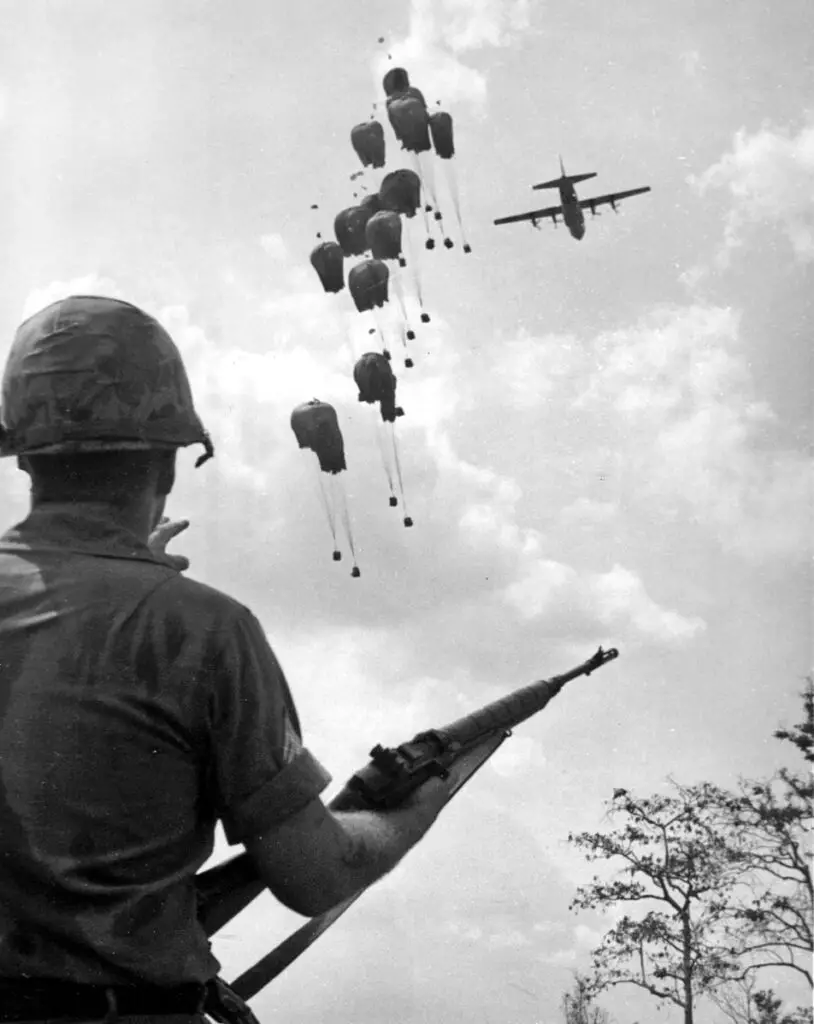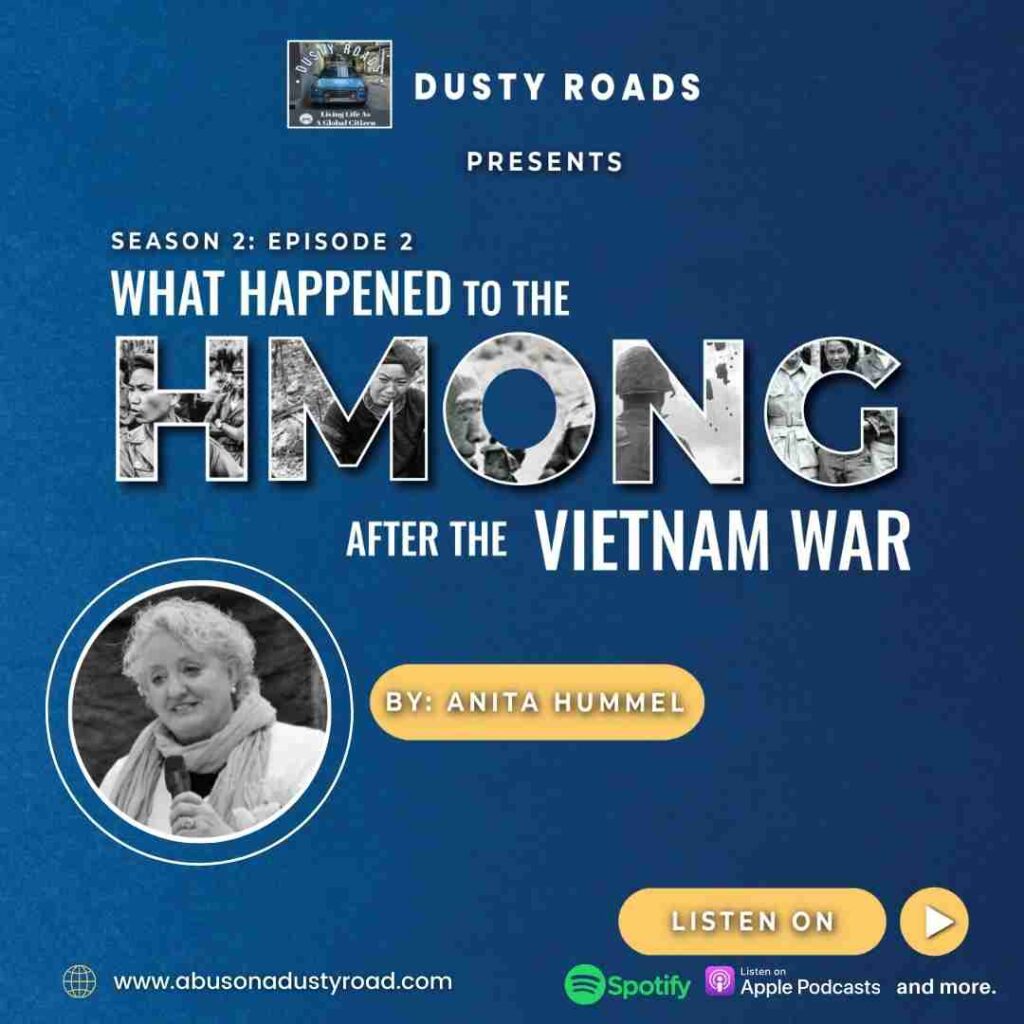You can’t think about the Vietnam war without thinking about the Hmong who helped, fought, and died alongside the American Soldiers. These Hmong were located mainly in Laos.
When the Vietnam War ended, the Hmong in Laos was in a terrible position; the Hmong fighters were enemies of the present Laotian government and considered “persona non gratis.” Some were forced into labor camps or kicked out of their home and lands. The Hmong eventually made their way to the Laotian – Thai border to try to get into the United States via Thailand.
Table of Contents
- Laotian Hmong and the Vietnam War
- Hmong and Refugee Camps
- Hmong and The US Immigration
- The Hmong In Laos, CIA, And Vietnam War
- Related Questions
When we speak about the Hmong who suffered after the Vietnam War, we need to talk about Laotian Hmong. There are still Hmong in Vietnam, Laos, China, Thailand, and Myanmar. Not all these groups were affected by the Vietnam war as much as the Hmong in Laos were affected.
Laotian Hmong and the Vietnam War
The Hmong in Laos was in a terrible state after the Vietnam war. The North Vietnamese bombed their villages, and the new Laotian communist regime government saw the Hmong as enemies of the state. Many Laotian Hmong became refugees in their own country.
The war destroyed the livestock and lands of the Hmong. The U.S. sponsored some food drops of fifty tons of rice a day – this amount of rice would feed about 100,000 Hmong. But dropping food so people could survive was not a long-term solution for anyone.

In February 1973, the Vientiane Agreement was signed, which called for a cease-fire in Lao and a coalition government, ending U.S. air support. At this time, the American relief programs also ceased, and the new Laotian regime considered the Hmong as enemies of the state.
About 1,000 to 3,000 Hmong of, mainly high-ranking army officers, the U.S. helped airlift them and their families to Thailand. But thousands more who had helped fight with the Americans or remained neutral were left behind in a ravaged country controlled by the North Vietnamese.
Many Hmong were also forcibly relocated to lowland areas of Laos and forced to work in state-owned collective farms. Others were forced into “seminar camps,” where they were forced to labor and undergo political indoctrination.
Many of the Hmong feared retribution, famine, and even death. Because they feared for their lives, they made the hazardous journey to Thailand on foot, hiding in the jungles and walking mainly at night to cross the Mekong River, which borders Laos and Thailand.
Many Hmong died from disease, starvation, exposure, and even drowning during this journey to Thailand.

Listen To Our Podcast About The Hmong And The Vietnam War below or by clicking here.
Hmong and Refugee Camps
Once the Hmong arrived in Thailand, they were placed in refugee camps along the Thai/Laotian border. The main camp was Ban Vinai. These make-shift camps had no electricity, running water, or sewage disposal and were significantly overcrowded. The conditions at this camp were not easy.
In 1986, at the peak of the Ban Vinai camp, the camp had almost 43,000 residents. About 90% of those were Hmong. In 1992 the Thai government closed the camp.
Hmong and The US Immigration
Because many of the Hmong had U.S. military ties, many immigrated to the United States. The Hmong and Laotians, who were higher educated, were allowed to leave for the United States first, with the others waiting behind.
Over the years, the U.S. Government allowed about 200,000 Hmong to come to the United States; many Hmong now reside in the U.S. states of Minnesota, California, and Wisconsin.
For many Hmong, the adjustment to America has not been easy. They had to leave behind their country, culture, and way of life.
The Hmong In Laos, CIA, And Vietnam War
When you talk about the Hmong and the Vietnam war, you need to talk about Laos. In 1963 of the 300,000 Hmong living in Laos, more than 19,000 men were recruited into the CIA by the United States government.
The CIA recruited the Hmong men as a gorilla unit or SGU; other Laotians enlisted in the Laotian royal Armed Forces. Each soldier was paid an equivalent of about three dollars a month. To help supplement these fighters, the CIA would also drop food and help to build schools throughout the region.
By 1968 nearly 40,000 Hmong troops were fighting, with this number ever-growing. At first, the army was made up of men, but younger boys joined the effort t as the war grew and the deaths mounted.
The main goals of this group of Hmong soldiers included:
- To guide U.S. booming missions
- To rescue the downed U.S. Pilots.
- To block the Ho Chi Minh Trail.
In some Hmong villages, the U.S. set up radar systems to help track the U.S. planes flying into North Vietnam. The Hmong troops manned these radars.
These Hmong fighters and soldiers deserve our respect; they gave up their lives, homes, and families during the Vietnam War. The Hmong lost their country, culture, lands, and way of life in the process.
If you want to learn more about The Hmong and the Vietnam War listen to our podcast by clicking here.
At A Bus On A Dusty Road, we talk about everything about travel, life, and ex-pat living. We are all about “Living Life As A Global Citizen.” We explore social, cultural, and economic issues and travel.
We would love to have you be part of our community. Sign up for our newsletter to keep up-to-date by clicking here. If you have any questions, you can contact me, Anita, by clicking here.
Listen to our Podcast called Dusty Roads. You can find it on all major podcast platforms. Try out listening to one of our podcasts by clicking here.
Subscribe to our A Bus On A Dusty Road YouTube Channel filled with great videos and information by clicking here.
Related Questions
What Was The Main Reason For US Involvement In Vietnam?
The main reason for the involvement of the United States in the Vietnam War was the belief in the Domino theory; the Domino theory was a principle used to describe the effects on the world if Vietnam fell to communism. If Vietnam became communist, then the rest of Asia, New Zealand, and Australia would eventually become communist. At the time, American leaders felt they were fighting for the survival of democracy throughout the world.
By clicking here, you can learn more by reading What Was The Main Reason For U.S. Involvement In Vietnam?
How Many Vietnam War-era Bombs Are Still in Vietnam?
It is estimated that at least 350,000 tonnes of bombs, or about 5% of Vietnam War-era bombs, remain in Vietnam. At the present clear-up rate of the explosives, it will take at least 300 years to remove the unexploded ordinances from Vietnam’s landscape.
To learn more, you can read our blog on How Many Vietnam War-era Bombs Are Still in Vietnam? by clicking here.


2 responses to “What Happened To The Hmong After The Vietnam War?”
I am currently writing a paper that is very related to your content. I read your article and I have some questions. I would like to ask you. Can you answer me? I’ll keep an eye out for your reply. 20bet
Your article helped me a lot, is there any more related content? Thanks! https://www.binance.com/cs/register?ref=PORL8W0Z